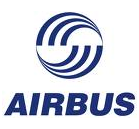M&A Value Creation
Value creation from M&A activity is not a given. It needs to be based on sound logic starting with the pre-deal rationale. Having worked on a host of mergers and acquisitions, we suggest that an early factor of success is the strategic rationale based on at least one of five key types of acquisitions.
Throughout the last decade we have advised on a number of high profile integrations, such as BP’s acquisition of Veba in Germany, and a myriad of SME acquisitions in the technology sectors. Our observations of what creates value on M&A has been unchanged. There are five key types of value enhancing deals:
- Improving performance in the target
- Taking out overcapacity in the market
- Providing access to new markets
- Acquiring skills (faster)
- Business development of new or emerging technologies.
We explain how the five key types drive the success of an acquisition based on one case study of an acquisition, which Moregate recently advised on.
The Case
Moregate advised the board of a $100m revenue technology services company on the acquisition of a direct competitor in the UK. Both companies operate in a niche technology services sector. The majority of clients are global banks and professional services companies, retail and global not for profit organisations.
Strategically, a number of market forces are present that already have or will change the competitive landscape, such as commoditisation, technology convergence, globalisation and emergence of a new breed of competitors from adjacent IT industries.
Key Types of Acquisitions
Improve performance in the target:
A common strategy to create value from the acquisition. The aim is to reduce costs, increase margins and manage cash in the target bringing to bear the acquirer’s capabilities. These include financial fire power, access to funds, management and business processes. In our case we advised the board to focus on cost and cash management, but also revenue generation through improving the credit rating in the target by paying off debts and creditors. The acquirers financial fire power and access to group funds enabled the target to bid for more and better work. Within three months the target reported the best ever order book as deals materialised that were previously held back by customers.
Taking out overcapacity in the market:
This applies to mature markets more than to emerging markets. However, we are currently working with a client in a specific technology service sector. The sector is under pressure from convergence of technology thus gradually inviting new emerging players and changing the market rules. The challenge is to bug the trend by taking competitors out of the market to gain access to customers (to defend the turf), and to acquire technical capabilities to play and lead in the technology convergence.
Providing access to new markets:
The acquiring company can use the target company’s capabilities in adjacent market sectors and geographies to accelerate access to these sectors.
Using the target company’s expertise as a platform for growth in these sectors the acquirer used its superior financial firepower to provide the marketing resources to increase the footprint. The company achieved a 20% increase in sales orders in the new sectors within six months of the acquisition.
Acquiring skills faster:
The success of Cisco being a serial acquirer of technologies is well documented. Nearly half of Cisco’s $36bn turnover comes directly from acquisitions, and with $33bn of cash in the coffers more acquisitions are targeted. Cisco are currently pursuing 30 market adjacencies.
Analysts believe this strategy could propel Cisco’s turnover to $100bn over the next five to seven years.
The aim is clear, invest in emerging technologies and geographic markets with low entry barriers, invest heavily, choose your bets and invest even more, all this to shut the door for potential competitors when the technologies mature.
This strategy might be one step too far for SMEs as it puts stress on the balance sheet. Especially with tough financial market conditions the cost of capital may outweigh the value of pursuing an aggressive strategy.
However, a targeted strategy may well be worth pursuing. In our case the company is looking to expand into an adjacent technology, which is relative mature with good margins, but with new demand generated by global organisations keen to reduce their operational costs. Speed is of the essence as other players from adjacent sectors are eying an entry as well.
Business development of new or emerging technologies:
This is a “pick winners early” strategy. It involves making multiple bets by investing in promising but unproven technologies, some may fail. Critically important is discipline and attention to detail, access to funds to raise the profile of the technologies, and the ability to absorb risks on the balance sheet.
By focusing on four of the five types of value creation Moregate helped to ensure the acquisition generated cost savings and growth benefits of twice the deal costs.
Focused executive interviews set the scene for senior management to engage in the 100 day planning and subsequent benefits realisation.
 Moregate Consulting
Moregate Consulting












